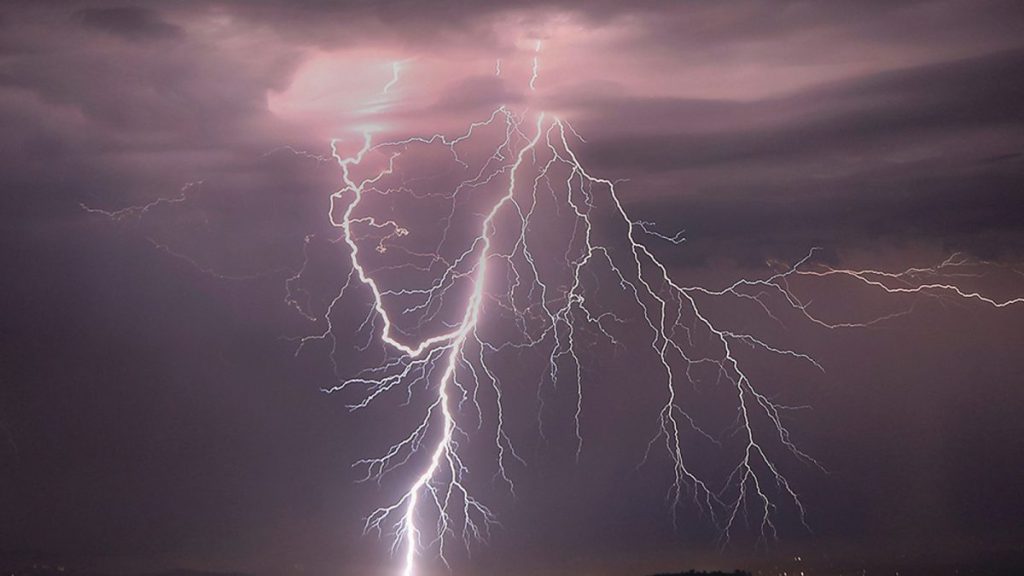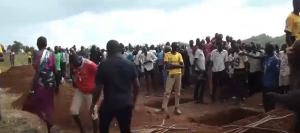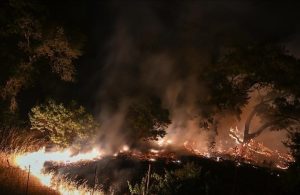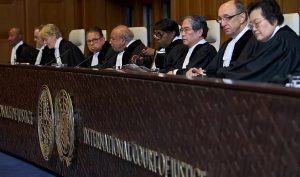
A community in northern Uganda is in mourning after 14 people, including children and young adults, were killed by a lightning strike on Saturday, November 2. The victims, who were attending a prayer service in the Palabek Refugee Settlement Camp, were struck by a sudden thunderstorm that hit just before dusk.
The tragedy unfolded around 5:00 PM, as a group of refugees gathered in a makeshift structure for evening prayers. Witnesses reported that the storm quickly intensified, and the fatal lightning strike occurred about 30 minutes later. Police confirmed that 14 people died on the spot, and the victims ranged in age from 9 to 21 years old. The youngest victim was a 9-year-old girl, while the oldest was a 21-year-old man.
According to local authorities, 8 of the deceased were male, and the rest were female. In addition to the immediate fatalities, several others were injured, though their exact number and conditions were not immediately released. The victims, who were living in the refugee camp after fleeing conflict in South Sudan, were part of a larger community of displaced persons who have sought safety in Uganda.
The lightning strike is believed to be particularly deadly due to the lack of adequate infrastructure in the camp. Police investigations revealed that the makeshift metal shelter, which the victims were gathered in, offered little protection from the storm. This structure, typically used for community gatherings, did not have any lightning protection systems in place, which likely contributed to the high number of casualties.

Lightning strikes are a relatively common occurrence in Uganda during the rainy season, which lasts from March to November, but incidents of such high fatality are rare. According to local meteorologists, the region has seen increased lightning activity in recent months, a trend attributed to the seasonal rains and unpredictable weather patterns. However, the Palabek Refugee Settlement camp, which houses thousands of South Sudanese refugees, is not the only community affected by this natural hazard.
The absence of proper infrastructure to safeguard against lightning in the camp is a major concern, especially considering the vulnerability of displaced communities. The makeshift shelters in the camp, often constructed from metal and other conductive materials, are ill-equipped to protect against such severe weather conditions. This tragedy has raised questions about the need for more comprehensive disaster preparedness and protective measures, including lightning rods and safer communal spaces.
The victims, many of whom fled the ongoing civil conflict in South Sudan, were part of the large refugee population living in Uganda. The East African country is one of the largest hosts of refugees in the region, with over 1.5 million refugees residing in various camps across the country. The Palabek settlement, located in the northern part of Uganda’s Lamwo District, is one of the more recent settlements, established to accommodate South Sudanese refugees seeking asylum from the violence in their homeland.
Ugandan authorities have expressed their condolences to the families of the deceased, and police have vowed to continue their investigations. Local officials have also pledged to enhance safety measures in the refugee camps to prevent similar tragedies in the future. The Ugandan government, along with humanitarian organizations operating in the region, is expected to review existing camp infrastructure and take steps to improve conditions for vulnerable communities, particularly with regard to natural disaster preparedness.
This incident has drawn attention to the need for greater resources and attention to disaster risk reduction, particularly in refugee camps where people are already living in precarious conditions. In addition to the immediate support for the families of the victims, there is a growing call for improved facilities and training to ensure that refugees are better equipped to deal with the challenges posed by Uganda’s unpredictable weather.
As the community in Palabek buries their loved ones, they are also left grappling with the broader issues of safety, security, and the resilience needed to survive in an environment that is already fraught with challenges. For now, the residents of the camp, many of whom have lost family members in the strike, must cope with the aftermath of this devastating tragedy while also looking to the future for answers and support.







